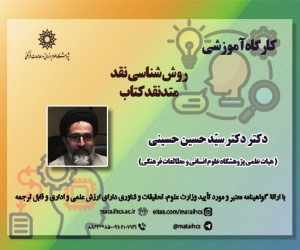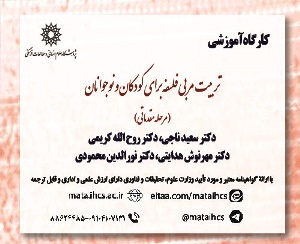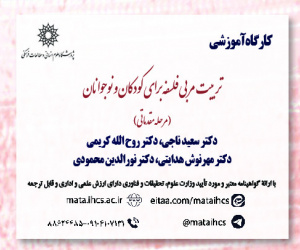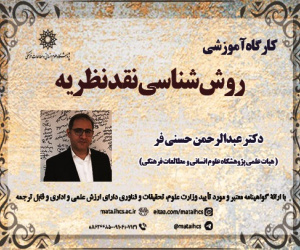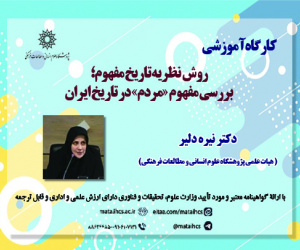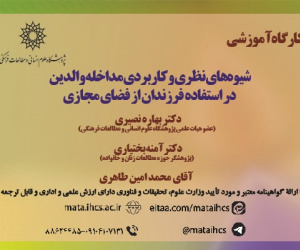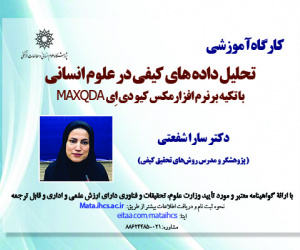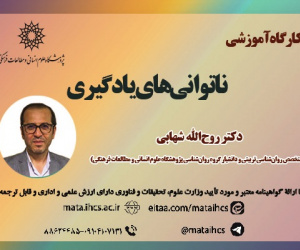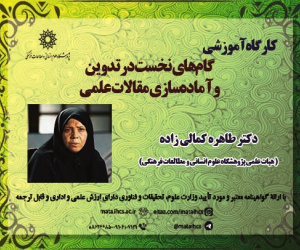فراتحلیل مطالعات حاکم بر رویکرد شهر ۱۵ دقیقه ای با تکیه بر مطالعات جهان (مقاله علمی وزارت علوم)
درجه علمی: نشریه علمی (وزارت علوم)
آرشیو
چکیده
رویکرد شهر ۱۵ دقیقه ای پس از شیوع کووید-۱۹ به عنوان یک رویکرد شهرسازی پساکرونا مورد توجه بسیاری از پژوهشگران قرارگرفت. پژوهشگران نیز با توجه به مقیاس مطالعه، زمینه فرهنگی، اجتماعی و اقتصادی، نوع مطالعه و رشته تحصیلی (برنامه ریزی شهری، طراحی شهری، جغرافیا، حمل ونقل) به گونه ای متفاوت به این مفهوم پرداخته اند. این تنوع در دیدگاه، چالش های متعددی ایجاد می کند. از این روی، پژوهش حاضر سعی دارد تا با بازشکافی موضوع، گامی در جهت روشن تر شدن ابعاد این مفهوم و کاربردهای آن بردارد. هدف این پژوهش ارائه پایه و اساس نظری عمیق و قوی جهت پیشبرد تحقیقات مفهوم شهر ۱۵ دقیقه ای است. در این پژوهش از روش فراتحلیل استفاده شده است. برای محدودسازی جستجو، تنها جستجوی کلیدواژه ها در عنوان مقالات درنظر گرفته شد. 106 مقاله مورد تجزیه و تحلیل موجز قرار گرفت؛ که از این تعداد ۴ مقاله فارسی و 102 مقاله انگلیسی بوده اند. براساس نتایج این پژوهش، این رویکرد از چهار بعد تراکم، تنوع، مجاورت و دیجیتالی شدن شکل یافته است و در بیشتر مطالعات با تحلیل دسترسی به امکانات مورد نیاز شهروندان پیش رفته است. در روش شناسی این مفهوم هر سه رویکرد کمی، کیفی و آمیخته مشاهده می شود؛ با این تفاوت که تعداد مقالات آمیخته با اختلاف کمی، بیشتر است. مقیاس شهر و پس از آن محله بیشترین مقیاس مورد استفاده در مقالات بررسی شده، بوده اند؛ چرا که کلیدواژه های مورد استفاده در این پژوهش طیف وسیعی از شهر/ محله ۱۵ دقیقه ای و یا شهر/ محله ۲۰ دقیقه ای را شامل شده اند. این رویکرد به معیارهای متفاوتی وابسته است که در این مقاله به ۵ بعد عوامل فردی، زیست محیطی، تسهیلاتی و خدماتی، کالبدی و ادراکی-اجتماعی تقسیم بندی شده اند. با توجه به جستجوهای انجام شده این رویکرد در ایران در موارد بسیار کمی مورد استفاده قرار گرفته است و فرصت مطالعات بیشتر برای پژوهشگران و متخصصان شهرساز وجود دارد.Meta-analysis of global research on the 15-Minute City approach
Background and Objectives: After the outbreak of COVID-19, the 15-minute city approach emerged as a post-pandemic urban planning strategy, attracting significant attention from many urban researchers. The 15-minute city approach is an innovative method based on a mid- to long-term comprehensive and systemic vision of the city, aiming to provide a better quality of life for its residents. The six fundamental functions of this approach—living, working, meeting needs, healthcare, education, and entertainment—are integrated within a planning network composed of four dimensions: proximity, density, diversity, and digitalization. In addition to the concept of the 15-minute city, other time-related urban concepts have been introduced by researchers and urban institutions. These time-based discourses, known as X-minute cities and encompassing a range of labels such as 1, 15, 20, or 30-minute cities or neighborhoods, activate a set of policies from the street level to the city scale. Researchers worldwide, considering factors like the scale of study, cultural, social, and economic contexts, type of study, and academic disciplines (urban planning, urban design, geography, transportation), have approached this concept in various ways. This diversity in perspectives presents numerous challenges. Therefore, the present research aims to clarify the dimensions and applications of this concept by re-examining the subject. The objective of this study is to provide a deep and robust theoretical foundation for advancing research on the concept of the 15-minute city. Accordingly, the present research conducts a meta-analysis of articles related to this approach within the time frame of 2014-2023.
Methods: This research employs a meta-analysis method and a comprehensive review of the existing literature on the concept of the 15-minute city to elucidate the definition of this approach, its principles, characteristics, and measurement methods. Accordingly, this study is of a fundamental-theoretical nature. Meta-analysis is a systematic review that has a specific and well-defined research question and utilizes precise and organized methods to identify, select, and evaluate relevant studies, as well as to collect and analyze data from the research included in this review. For the purpose of meta-analysis and an in-depth study of the existing literature, a systematic review of global theoretical literature related to this concept was conducted over a ten-year period (from 2014 to 2023) to understand its concepts, dimensions, key elements, tools and methods, and their evolution. This literature was collected by searching the keywords “15-minute city,” “15-minute neighborhood,” “20-minute city,” “20-minute neighborhood,” “temporal urbanism,” and “walkable neighborhoods” in the titles of English articles through two search engines, Google Scholar and Scopus, as well as in the titles of Persian articles in the Noormags, SID, Civilica, MagIran, and ISC databases. To screen the articles, a qualitative assessment checklist and the QARI tool along with Program Skills Appraisal Critical (ASP) were utilized. Additionally, using the KESP checklist, each article was assigned a score ranging from one to five. Articles that accumulated scores above 21 were scientifically and qualitatively approved, while the remaining ones were excluded. By employing these tools and eliminating duplicate and irrelevant articles, a total of 106 articles were subjected to concise analysis, of which 4 were in Persian and 102 were in English.
Findings: The findings of the research indicate that this approach is shaped by four fundamental dimensions: density, diversity, proximity, and digitalization. In this meta-analysis, topics such as the spatial distribution of articles, conceptual models, the nature of studies and effective criteria in elucidating the approach, scales of studies, methods and tools for data collection, the scientific validity of articles, and the consequences and topics related to the 15-minute city approach were examined. The spatial distribution of the articles reveals that over 40% of the studies have been conducted on European cities and neighborhoods. Regarding the 15-minute city model, most studies have relied on Paris 15-minute city model and Melbourne’s 20-minute neighborhood, with some studies introducing modifications relevant to their specific contexts. In evaluating and applying the 15-minute city approach, various dimensions and components have been identified. This article provides an in-depth examination of these components, categorizing them into five aspects: individual factors, environmental factors, facilities and services, physical factors, and perceptual-social factors. Concerning the scale of research, studies have been conducted at various levels, ranging from neighborhoods to metropolitan areas and states, with the city scale being the most extensively researched. In terms of methodology, the articles on the 15-minute city approach exhibit quantitative, qualitative, and mixed-method approaches. The reviews indicate that while there is a predominant focus on quantitative methods within this approach, the majority of studies employ mixed methods overall. Half of the reviewed articles hold a Q1 scientific ranking, and over 90% of the first authors are faculty members from prestigious universities worldwide, as well as doctoral and master’s students. The concentration of the reviewed articles within the fields of urban planning and its subfields—such as transportation, urban planning, and urban design—demonstrates the specialized nature of this topic within urban science. Due to its comprehensive nature, the 15-minute city approach influences a wide range of topics, from the health and well-being of citizens to feelings of satisfaction and social equality across various aspects of citizens’ lives.
Conclusion: Based on the conducted reviews, the 15-minute city approach has a positive impact on important urban issues, including health and well-being, air quality, smart cities, social interactions, service location, urban agriculture, increased active transportation, happiness and vitality, social trust, satisfaction, time management, resilience, and social equality. Therefore, the significance of this approach as a comprehensive and holistic strategy becomes increasingly evident. Additionally, a limited number of Persian articles have addressed the 15-minute city approach, indicating opportunities for further studies on this approach for Iranian urban researchers and professionals. According to the conducted studies, the most significant research gaps concerning the 15-minute city include examining the effects of this approach on the macroeconomic aspects of location, land value, and value chains in urban spaces. Moreover, despite the elucidation of the 15-minute city approach, the necessary urban planning and management requirements for its realization still require further research. It should be noted that due to the innovative nature of this approach, more comprehensive results will be achieved over time with the increasing number of articles in this field.


